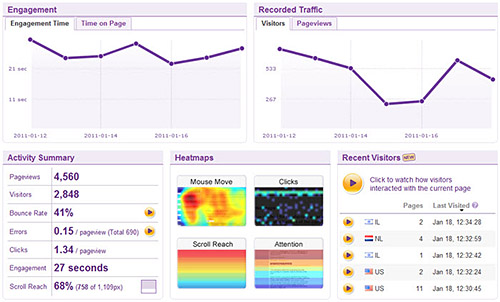
There are many reasons why a system administrator implements an application monitoring solution. While many of these reasons involve monitoring and testing the inner components of an application, uncovering user engagement and usage rates is one of the most under-used, yet most powerful, capabilities of monitoring solutions. If you’re interested in enhancing the methods in which user information is gathered and used for improvements, you should ask how your application monitoring solution can satisfy this end-user curiosity. Whether you know it or not, almost all application monitoring solutions provide insights capable of revealing user engagement and usage rates.
When is the Application Most Active?
The first step in understanding user engagement and usage rates is to determine when the application is most active. By isolating an exact time frame, you’re able to determine when traffic to the application is at its heaviest. This is important for several reasons. When you understand when the application is mostly used, you’re able to adjust inner components (both physical and virtual) to better handle this increase in traffic. By understanding when an application is mostly used, you’re able to better adjust marketing ventures toward this demographic. In order to understand the metrics in the best possible way, it might be a good idea to use some type of a web app monitoring program. For example, if application usage is at its highest Monday through Friday during normal business hours, you’d understand that the bulk of your visitors are working professionals. Therefore, you can adjust marketing content delivery until these peak times, when more users are likely to review its contents.
Which Application Features are Most Used? Which Are Barely Used?
By freeing up an application of unnecessary features, you’re not only reducing its “weight,” but also providing a more streamlined interface for users. While you may feel a certain feature is necessary, if it’s rarely used by users it may be affecting the overall user experience. Moreover, depending on the feature, it may be slowing down the application. Regardless, understanding what features are most popular, and which are least popular, offers developers great insight toward application improvements and upgrades.
Do Users Prefer the New or Old Application Version?
When you’ve implemented a new version of an application, it’s essential to monitor user engagement and usage rates. This information clarifies whether or not the upgrade was necessary. In the worst case scenario, an application upgrade is not attractive to users and their usage rates will drop off. When you receive this data, it’s easy to understand whether or not you need to make adjustments to the interface or operation of an application. However, if you notice application usage increases after an upgrade, you know you’ve made the proper decision.

